Rank 3
Country Index
New Tea Country
 Part of the Heart Empire
Part of the Heart Empire

Geography & Resources
The coast of Tea country is littered with sandstone cliffs that rise upwards of forty feet in the air at their highest. These cliffs are home to the largest population in the country, with each major city housing over twenty thousand people, whose homes are carved directly out of the cliff side, as well as on top of the cliffs. Aside from the sheer cliffs of Tea Country, the coast also has many white sand beaches, whose turquoise blue water has also attracted numerous people. Inland of the beaches are many fishing towns, with piers that reach four to five miles into the sea. At the end of these piers, and even further into the sea, are floating villages that are crafted out of the bones of massive sea creatures.
The primary resource of Tea Country are the creatures of the sea. The denizens of Tea Country hunt animals of all sizes in the depths of the ocean, and do not waste a single inch of their kills. Whales are hunted for their oil, fat, meat, bones, and even their skins, while lobster, crabs, and turtles are hunted not only for their meat, but for their hard carapaces. Even coral is grown, and harvested as one would trees for lumber. Inland, the trees of the many forests are carefully harvested for lumber, fruits, and medicinal herbs, with the various animals within also being hunted for food. Thanks to the efforts of Ikuto and the Kobushi Kaishuu, proper Tea Country tea is also being grown again, and is a hot commodity that does well on international markets.
Traveling further into Tea Country, there is the Laughing Desert. The citizens of the Laughing Desert, like those of Tea Country’s coast, utilize every inch of their homeland. Not only do they hunt the various wildlife of their desert homeland, but they also grow and harvest the flora that grows naturally within the desert. While the homes of the coastal citizens are built out of the stone from the cliffs they live on, the homes of those within the Laughing Desert are all underground. All of their above ground buildings are constructed out of a mixture of animal bones, leather, lumber, and red clay.
Ecology & Climate
During summer, regions of Tea Country are strongly influenced by cold ocean currents which keep the weather in the region very dry, stable, and pleasant. Similar to desert climates, in Tea Country there is a strong diurnal character to daily temperatures in the warm summer months due to strong heating during the day from sunlight and rapid cooling at night.
In winter, Tea Country is no longer influenced by the cold ocean currents and therefore warmer water settles near land and causes clouds to form and rainfall becomes much more likely. As a result, areas with this climate receive almost all of their precipitation during their winter and spring seasons, and may go anywhere from 3 to 6 months during the summer without having any significant precipitation.
Tea Country is particularly noted for its spectacular array of endemic plants, with 52 percent of the 22,500 species found nowhere else in the world. Due to the long history of human occupation on the coast of Tea Country, many of the forests have been replaced by floristically rich scrubland. This ubiquitous scrub is sometimes classified into different types, depending on factors such as the plant composition and soil type, although the boundaries between these are blurred, producing a mosaic of plant communities. Perhaps the most iconic inhabitant of the shrubland is the olive tree (Olea europaea), a small, evergreen tree best known for its edible fruit. A range of familiar aromatic shrubs such as lavender (Lavandula), thyme (Thymus) and rosemary (Rosmarinus) also grow there, along with medically important plants like felty germander (Teucrium polium). As well as providing an array of habitats, this complex mixture of plants puts on a spectacular floral display every spring.
The forested areas of Tea Country are much more diverse than those found in other areas of the world. Of the 290 tree species native to Tea Country, an incredible 201 are endemic. The cedar of Lebanon (Cedrus libani) in particular is renowned for its timber, having been utilized for hundreds of years. The sea off the coast of Tea Country is host to a range of unique plants, including up to 200 endemic macroscopic species. One of the most important marine vegetation types, however, is the meadows of seagrass, such as Posidonia oceanica, which supports over 80 percent of the fish yield in Tea Country.
The sea, forests, and xeric shrubland of Tea Country is home to a wide variety of animals. In the sea the most common animals are the Monk seals, Loggerhead turtles, Shortfin Mako sharks, Saltwater Crocodiles, Bluefin Tuna, Rabbit fish, Dalmatian pelican, Dusky grouper, Angel shark, and the Balearic shearwater. However, there are some fish that are rarely found within the waters off the coast of Tea Country. After traveling out at least twenty miles, Giant Squid can be found on occasion, as well as massive sea snakes, Blue, and Orca whales, as well as what the fishermen of Tea country call Leviathan Dragons.
On the coast of Tea Country there are animals such as the Lynx, Spanish Imperial Eagle, many various types of lizards, with the largest being the Komodo Dragon, though another large lizard found on the coast are the Iguanas. Aside from the lizards there are many birds, and insects, such as the Dragonfly, that all live on, or around, the cliffs of Tea Country’s coast. Within the forests of Tea Country, the prominence of the Lynx becomes more pronounced, as it is the largest wild cat within Tea Country’s forests, though there are smaller wild cats. There are elk, antelope, and even barbary sheep that have escaped from their pens all living within the forests. There are large constrictor snakes, as well as venomous snakes, all living within the branches. There are field mice, boars, monkeys, and apes, even the Hyenas from the Laughing Desert will wander into the forest from time to time. The rarest animals within the forest, however, are the Silverback Gorillas, and the large elephants, which rarely leave the forest.
Within the Laughing Desert, some of the more common animals are the Caracal, Striped Hyena, Coyotes, Rattlesnakes, Addax Antelope, Arabian Horse, Bats, Bighorn Sheep, Collared Peccary, Desert Elephants, Dingoes, Dromedary, and the Fennec Fox. However, some of the more uncommon animals are the Ibex, Nine-Banded Armadillo, the Giant Armadillo, Oryx, and the Peregrine Falcon.
While those on the coast primarily eat fish, and raise lambs for slaughter, those within the Laughing Desert eat primarily the Addax Antelope, though they will eat any animal that they are capable of killing.
Politics, Economy, & History
New Tea as it is colloquially known is a country that was formed during The Great War taken by a Shogun desperate for power and land abandoning their home in the process, giving free reign for Water Country to establish footing in the mainland. With a new land and the ravishes of war, the people struggled to establish themselves economically bringing a wave of famine and poverty. Tea was liberated by the organisation known as the Kobushi Kaishuu, by rallying the people to revolt promising them a future. Becoming the largest exporter of Tea Leaf across the entire world has brought a huge boost to the country’s economy, due to the lush weather and the countries knowledge and expertise of tea growing makes it well sought after and is said to be the best tea money can buy.
New Tea is the home of one of the most ancient lineages of Samurai in the world, their unique kenjutsu known as Iaido is well sought after, having a variety of Dojos and masters teaching the style. Even though they live through a very traditional Samurai system they are under the jurisdiction of the Heart Empire and The Grand Shogun, however it has a local council led by the Shogun. This position is either gained by a vote by the council or can be attained by challenging the Shogun Zhang-Gi, a form of one on one martial combat and is usually decided by the fighters ability to draw their sword.
At the time of writing, New Tea and the Heart Empire keep a position of friendliness with all sovereign governments and the Big Five. Trade deals have been made with many countries, mostly offering luxury goods in exchange for things such as metals from Iron Country, or wood from Fire Country. However, the Empire does not have a pacifistic culture, and has strong anti-slavery and anti-tyranny outlooks, liable to step in to worldly affairs as they see fit.
Culture and People
Being a newly founded refugee state with a mixture of peoples primarily from Old Tea, River Country, and its former inhabitants of Shark Country, New Tea Country (and especially its capital city of Xincha) is a melting pot of cultures and peoples from various sectors of the world. This melting pot leads to a lot of intercultural mingling that has led to changes in many parts of the culture, including architecture (which has shifted to more quickly built western-style buildings), clothing (which has become more tight-fitting western-style jackets and accessories), and more. Of course traditionalists still exist, especially in more well-known or powerful families from before the war, only lending more to the clash of cultures.
While in general the populace intermingle in a friendly fashion, those who identify strongly with their prior places of residence tend to become more secular, leading to minor segregation between expatriots of different refugee groups. This segregation has led to the existence of towns within towns, and even organized crime that some get into to protect their stretch of the city, and others get into for greed. Such organized crime is handled by a branch of the military that specializes in catching criminals with minimal harm, to take them to a prison for punishment and rehabilitation.
Thanks in part to new technologies, but also a change in leadership, most communities look after each other and enjoy socialized government programs, including access to doctors, and help during disasters. While chakra access is slowly becoming more available, and the steam technology makes these things more prevalent than ever, people still fall through the cracks, a testament to no system being perfect despite constant improvements.
Holidays & Religion
Being such a mishmash of cultures, New Tea celebrates many different holidays from many different origins and religions. Internationally through the empire, two are primarily celebrated: Heiji day, and Kaibyaku. Heiji day is well known outside of the empire as being the yearly celebration of the end of the Great War, when leaders from the Big Five send representatives to Steam Country to pay their yearly reparations. Kaibyaku is a celebration within the empire, celebrating the founding of the Heart Empire, the day that New Tea was freed from its despotic ruler.
Both of the above mentioned holidays are widely celebrated by all, with a late spring festival for Kaibyaku being especially famous and attracting visitors from all over the world. However, the individual cultures tend to have their own celebrations, and while the original intent may not be understood by all, the celebrations are often joined in regardless.
Kyoutei is a day in early summer when a grand boat race is held. This holiday originates from Shark Country, and celebrates a creation myth wherein the god of the sea brought the first humans to land as punishment, and they now race back out to sea in defiance. These races are typically held in small to mid-size boats with crews ranging from 2-5 people. The destination of the race changes every year, with some races lasting only a few hours, and others going nearly a week long.
Gotta is celebrated in the first days of winter with a grand feast that often lasts two or three days. Traditionally from River Country, this holiday celebrated the end of the fishing season, and the people hold a feast in the name of Takiyasha-Hime, a deity who is said to have freed her people from the clutches of demons and allowed them to settle in River Country for the first time.
New Tea, synonymous with it’s name sake is the largest exports of Tea Leaves across the entire world. Twice a year, there will be two flushes on Tea Leaves one in spring and one in summer, making the Flush Festival. Every member of New Tea, citizen, tea, shogun, or diplomat alike will put aside all personal needs and give themselves to the farms. Tea will be picked, boxed and processed to be exported and once complete the country will celebrate as equals, drinking varied teas and pairing them with specific dishes.
While not all holidays celebrated feature creation myth or deities, most people in New Tea are spiritual in one way or another. While making an exhaustive list of the many kinds of spiritualism present isn’t realistic, a lot of parallels can be drawn to Shintoism. Common themes include spirits present in everyday objects (I.E. a spirit of the plow who oversees the fields, usually considered personal to each object) to spirits who exist in context with ideologies and grander concepts (I.E. a spirit of freedom, or a spirit of the fishing harvest.) These spirits are sometimes seen in parallel to spirits that shinobi can summon, but are often seen as a greater, or perhaps lesser, kind of spirit that cannot present itself to humans in a physical form.
New Technology, Schooling, & Military Service
Thanks to the efforts of Kisama, Oban and the rest of her clan, New Tea and by extension the rest of the Heart Empire enjoys technological breakthroughs powered by compressed steam. These steam contraptions range from steam-powered horses to assist in pulling wagons, to steam-based heating and cooling systems from houses, and many things inbetween, giving them some modern comforts that industrialized chakra offers the great ninja villages. This technology is readily available to peoples from all walks of life, though like any technological advancement the latest models and densest concentration of it is most readily available to those with the money to get it for themselves first.
These new technological advancements and cultural shifts have also led to a mass effort towards education. The world’s first Shinobi Samurai Academy (Doushikai Academy, funded by both the state as well as private investors) has opened up its doors in the capital of Tea Country. The academy is one of many that has sprung up, providing free education to any who wish to seek it, even those from outside the borders of the Heart Empire. For children of the heart empire, this education is required, at a minimum, from the ages of six till fourteen, though those with extenuating circumstances are often given leave. The academies are plentiful enough to cover even the most remote reaches of the Heart Empire.
These academies also serve as military training, which all citizens of the Heart Empire are expected to undergo. This military training includes basic fitness and health education, several fighting styles depending on what regional teachers are available, and even classes on chakra manipulation. Those participating in the free schooling are also pushed into community service that ranges from picking weeds in the fields to acting as guards against bandits on trade routes, depending on individual ability and need.
Military service after training is not required, nor are the leadership likely to institute a draft in most circumstances outside of actions in defense of the empire. Those who wish to find employment in the Heart Empire military after their mandatory schooling will continue to report to their local academy for further education, as well as an appointed commander who will continue to give them missions of community service in peacetime. Samurai are well compensated for their efforts, and enjoy the freedom of a 2 year contract to retire when they please.
Being not of ninja origins, despite teaching some ninjutsu techniques in their academies, the Heart Empire does not recognize ninja ranking systems for their soldiers, instead opting for a ranking system based off of the four seasons, starting with fall, the beginning of the fishing season from the first Shogun's home country, and progressing through the seasons in order. Below is the list of rankings.
RankingShow
Akibushi (Fall Samurai) 秋
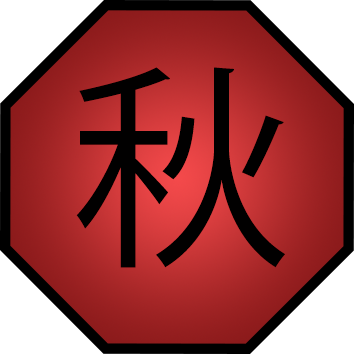
Fuyubushi (Winter Samurai) 冬
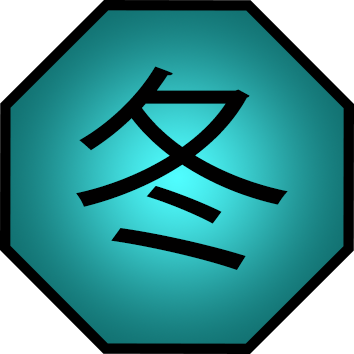
Harubushi (Spring Samurai) 春
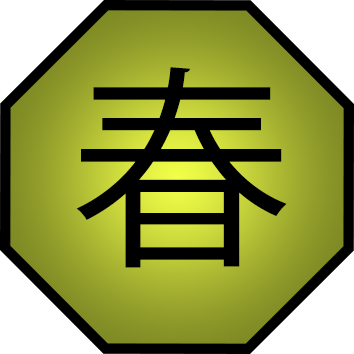
Natsubushi (Summer Samurai) 夏
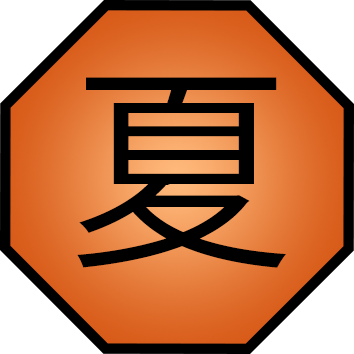
Tanenseibushi (Perrenial Samurai) 多年生
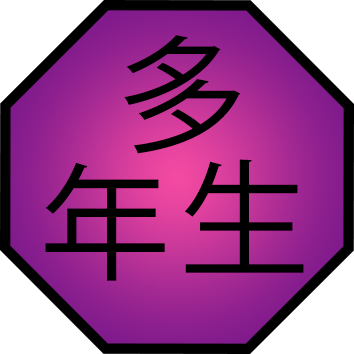

Fuyubushi (Winter Samurai) 冬

Harubushi (Spring Samurai) 春

Natsubushi (Summer Samurai) 夏

Tanenseibushi (Perrenial Samurai) 多年生

